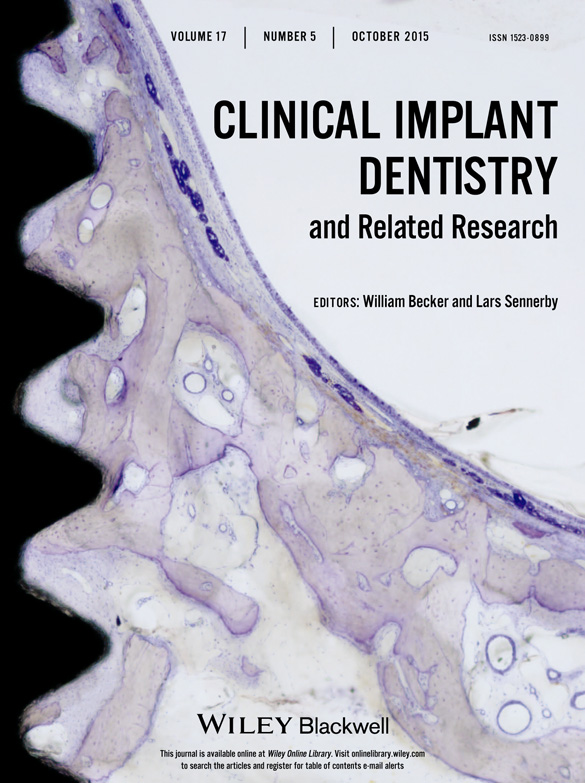Fresh-Socket Implants of Different Collar Length: Clinical Evaluation in the Aesthetic Zone
Abstract
Background
The aim of this clinical study was to compare clinical evaluations of implants in the aesthetic zone with smooth collars of different length.
Materials and Methods
Sixty-six patients requiring extractions of one, two, or three teeth in the aesthetic zone of the maxilla were enrolled in this study. Ninety-four implants were positioned and were loaded immediately after tooth extraction. Forty-seven implants with a short smooth collar of 0.5 mm (SCI) and 47 implants with a long smooth collar of 1.8 mm (LCI) were utilized in this study and were placed using a nonsubmerged approach. Clinical (gingival index, modified plaque index, modified bleeding index, probing depth, gingival recession) and intraoral digital radiographic parameters were measured at baseline and after 6, 12, 24, and 36 months of healing to evaluate crestal bone loss levels over time.
Results
After a follow-up period of 36 months, a survival rate of 100% was reported. The SCI group showed a mean bone loss of 1.07 ± 0.38 mm at 12 months and 1.09 ± 0.38 mm at 36 months. The LCI group showed a mean bone loss of 0.46 ± 0.14 mm at 12 months and 0.53 ± 0.12 mm at 36 months. After the 36-month follow-up period, both groups showed stable bone levels over time. Statistically significant differences were found between groups (p < .05).
No statistically significant differences were found between SCI and LCI groups with regard to clinical parameters over time.
Conclusions
This study revealed significant differences in radiographically observed marginal bone loss between the two types of implant with different smooth-collar lengths, but no differences in gingival vestibular margin outcome were observed.




